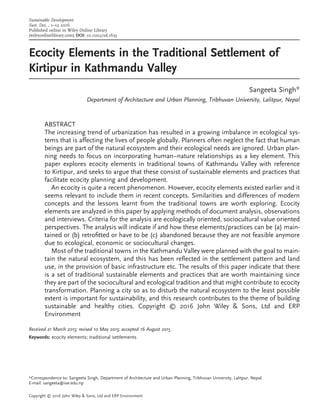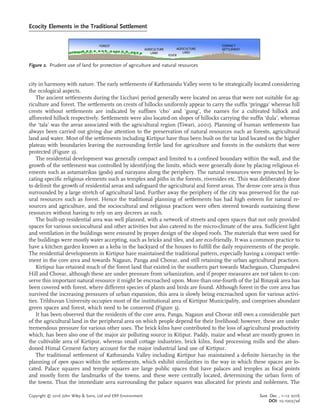This document discusses ecocity elements in the traditional settlement of Kirtipur in Kathmandu Valley, Nepal. It finds that many elements of modern ecocities were already present in traditional settlements like Kirtipur, such as compact development that preserves surrounding agricultural land and forests. Land use and settlement patterns in Kirtipur and other traditional towns maintained a balance between development and nature. However, urbanization pressures are threatening these ecocity elements as agricultural land is lost to development. The document analyzes ecocity elements in Kirtipur's land use and water management from ecological and sociocultural perspectives.











